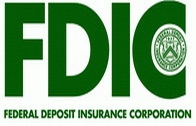Advertisement
FDIC Approves of Final Rules Regarding Large Bank Stress Tests

The Federal Deposit Insurance Corporation (FDIC) has announced publication of its final rule regarding company-run stress testing required by the Dodd-Frank Wall Street Reform and Consumer Protection Act of 2010. The rule applies to covered institutions with total consolidated assets greater than $10 billion. The final rule implements section 165(i)(2)(A) of the Dodd-Frank Act, which requires all financial companies with total consolidated assets of more than $10 billion that are regulated by a primary federal financial regulatory agency to conduct an annual company-run stress test. The final rule requires institutions with assets greater than $50 billion to begin conducting annual stress tests this year, although the FDIC reserves the authority to allow covered institutions above $50 billion to delay implementation on a case-by-case basis where warranted. The rule delays implementation for covered institutions with total consolidated assets between $10 billion and $50 billion until October 2013.
For institutions with assets greater than $50 billion that are required to begin stress testing this year, the FDIC anticipates releasing stress-testing scenarios in November. Institutions will use their data as of Sept. 30, 2012, to conduct the stress test. Results are due in January 2013.
The final rule revises the notice of proposed rulemaking published in the Federal Register on Jan. 23, 2012. The FDIC reviewed a wide range of public comments, and coordinated closely with the Federal Reserve Board (Board) and the Office of the Comptroller of the Currency (OCC) to ensure that rules issued by the FDIC, the Board, and the OCC are consistent and comparable. The FDIC also coordinated with the Federal Insurance Office as required by the Dodd-Frank Act.
The FDIC Board also approved a final rule that refines the deposit insurance assessment system for insured depository institutions with more than $10 billion in assets. The final rule amends the definitions used to identify concentrations in higher-risk assets to better reflect the risk posed to institutions and the FDIC. As of June 30, 2012, there were 108 institutions with more than $10 billion in assets.
Finally, the FDIC also updated its loss, income and reserve ratio projections for the Deposit Insurance Fund (DIF) over the next several years and concluded that the DIF reserve ratio is on track to reach the statutory minimum target of 1.35 percent by the Sept. 30, 2020, deadline. Commenting on the projections, Acting Chairman Martin J. Gruenberg said, "We are continuing on a path to gradually rebuild the fund in a manner that should not unduly burden banks while the economy continues to recover."
About the author





